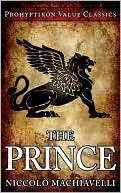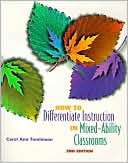Reading Culture: Contexts for Critical Reading and Writing
Acclaimed for its compelling readings and provocative images, Reading Culture provides students with outstanding instruction on how to read and write critically about the culture that surrounds them.
Search in google:
Acclaimed for its compelling readings and provocative images, Reading Culture provides students with outstanding instruction on how to read and write critically about the culture that surrounds them.
Readings and content new to this edition are marked with an *Introduction: Reading Culture Raymond Williams, “Culture is Ordinary”• A Guide to Visual Analysis• Reading Images• Reading Film1. Reading the NewsWhere Do People Get their News?* ”Young America’s News Source: Jon Stewart”Audience Survey* Reading Visual Displays of InformationReading Television NewsTerms to Keep in Mind as you Read Television NewsAnalyzing Content and Audience In Television NewsAnalyzing Visual and Verbal CodesReading NewspapersThe Look of the Front Page: Analyzing Visual DesignContinuing News: Covering a StoryReading About the News–Reporting War• The New York Times Editors, “The Times and Iraq”• Amy Goodman and David Goodman, “Un-Embed the Media”• Aaron Barnhart, “Embedded Journalists offer Riveting Reporting”• Joe Sacco, Complacency Kills• WIRED CULTURE: Reporting War in the Blogosphere* Reading Websites* Frank Rich, “The Nightly News: Anchorman Get Your Gun”Writing About the NewsConclusion2. GenerationsGloria Naylor, “Kiswana Browne”Arlie Russell Hochschild, “Gen (Fill in the Blank): Coming of Age, Seeking an Identity”Thomas Hine, “Goths in Tomorrowland”* Sharon Jayson, “It’s Time to Grow Up–Later”* Margaret Morganroth Gullette, “Trapped in Decline Culture”* WIRED CULTURE: Instant Messaging* Conor Boyland, “Confessions of an Instant Messenger”* Perspectives:• The New Momism: An Interview with Susan J. Douglas by Amy Reiter* Mommy Madness: An Interview with Judith Warner by Katy Read* Classic ReadingMargaret Mead, “We are All Third Generation”Visual Culture: Representations of Youth Culture in MoviesJames Gilbert, “Juvenile Delinquency Films”* FILM CLIP: Hollywood Stars: Brando, Dean, and MonroeFieldwork: Ethnographic InterviewsSusan D. Craft, Daniel Cavicchi, and Charles Keil, “My Music”Fieldwork ProjectA Note on InterviewingMining the Archive: Life Magazine3. Schooling Theodore R. Sizer, “What High School Is”Leon Botstein, “Let Teenagers Try Adulthood”Mike Rose, “Crossing Boundaries”* Thinking About Textbooks: Sex EducationMin-Zhan Lu, “From Silence to Words: Writing as Struggle”June Jordan, “Nobody Mean More to Me Than You and the Future Life of Willie Jordan”* WIRED CULTURE: Powerpoint• Edward R. Tufte, “PowerPoint Is Evil”Perspectives: Gender Gap• Lawrence Summers’ Remarks at the NBER Conference on Diversifying the Science and Engineering Workforce (Web link)• Katha Pollitt, “Summers of Our Discontent”• Christina Hoff Sommers, “Where Do Boys Fit In?”Classic ReadingLisa Delpit, “Skills and Other Dilemmas of a Progressive Black Educator”Visual Culture: Picturing SchooldaysFILM CLIP: Reading and Writing About Film: Reviews, Histories, CriticismFieldwork: Classroom ObservationField LogAnalysisWriting the ReportWorth Anderson, et al., Observations and Conclusions from “Cross-Curricular Underlife: A Collaborative Report on Ways with Academic Words”Mining the Archives: Textbooks from the Past4. Images Stuart and Elizabeth Ewen, “In the Shadow of the Image”• Suggestions for Reading Advertising* Michael Jacobson and Laurie Anne Mazur, “The Iron Maiden: How Advertising Portrays Women”* Visual Essay: Reading the Gaze: Gender in Advertising* Visual Essay: Rewriting the ImageVisual Essay: Public Health Messages• Vertamae Smart-Grosvenor, “When you Meet Estella Smart, You Been Met!”* WIRED CULTURE: Photographic Truth in a Digital Age• Brian Bergstein “Digital Photography Poses Thorny Issues for Justice SystemClassic ReadingJames Agee, “A Way of Seeing: An Introduction to the Photographs of Helen Levitt”* FILM CLIP: Storyboarding: Editing and Camera Work* Fieldwork: Taking InventoryMining the Archive: Advertising Through the Ages5. Style Dick Hebdige, “Style in Revolt: Revolting Style”* Visual Essay: Graphic Design in Rock Culture* Theme Parties• Mark Lawson, “The Very Nasty Party”• Shana Pearlman, “Mistaken Identity: The Peril of Theme Parties”• Gregg Easterbrook, “The Axle of Evil”* Visual Essay: American Car CultureVisual Essay: Tibor Kalman, “Sweet-Talking Spaghetti Sauce: How to Read a Label”* WIRED CULTURE: iPods* Rob Walker, “Aura”* Andrew Sullivan, “Society Is Dead: We Have Retreated into the iWorld”Perspectives: BrandingNaomi Klein, “No Logo”The Economist, “Who’s Wearing the Trousers?”Classic Reading• Roland Barthes, “The Face of Garbo”* FILM CLIP: Makeup and Costumes: Monsters and the Middle AgesMining the Archive: Race and Branding6. Public Space * Tina McElroy Ansa, “The Center of the Universe”John Fiske, “Shopping for Pleasure: Malls, Power, and Resistance”Murphy Davis, “Woodruff Park and the Search for Common Ground”Eva Sperling Cockcroft and Holly Barnet-Sánchez, “Signs from the Heart: California Chicano Murals”* WIRED CULTURE: Cell Phone Spaces• Annie Nakao, “Cell Phone Etiquette: Shut up, Already!”* Perspectives: Public Roadsides. Private Grief–Roadside memorials and Public Policy• L. Anne Newell, “Roadside Crosses: Centuries-Old Tradition Can Stir Controversy”• Jeff Burlew, “Memorials Cause Controversy”Classic ReadingJane Jacobs, “The Uses of Sidewalks–Safety”* Visual Culture:The Troubled Landscape• Jason Berry and Richard Misrach, “Cancer Alley”* FILM CLIP: Filming DystopiaFieldwork:Uses of Public Space: A Place to RestMapping the SpaceWatching PeopleMining the Archives: Take a Walking Tour7. Storytelling * Patricia Hampl, “Red Sky in the Morning”Jan Harold Brunvand, “‘The Hook’ and Other Teenage Horrors”Patricia A. Turner, “I Heard It Through the Grapevine”Michael Chabon, “The Amazing Adventures of Kavalier & Clay”* WIRED CULTURE: Video Games and Storytelling* Tom Loftus, “Bringing Emotions to Video Games”* Perspectives: Film Reviews: The Case of Spider-Man 2* Todd Gilchrist, “Spider-Man 2” from FilmStew.com* Roger Ebert, “Spider-Man 2Classic ReadingRobert Warshow, “The Gangster as Tragic Hero”* Visual Culture: The Graphic Novel–Reader Participation• Marjane Satrapi, “The Veil,” from Persepone* FILM CLIP: Book to Film–The AdaptationFieldwork:Writing a QuestionnaireSuggestions for Designing a QuestionnaireSample QuestionnaireReport on Your FindingsMining the Archive:Comic Strips and Comic Books8. Work Sandra Cisneros, “The First Job* Martín Espada, “Alabanza: In Praise of Local 400”Scott Adams, “The Dilbert Principle”Barbara Ehrenreich, “Nickel-and-Dimed: On (Not) Getting By in America”* WIRED CULTURE: Business in Bangalore* Thomas L. Friedman, “The Great Indian Dream”* David Moberg, “Hi-Tech Hijack: Corporations Ramp up Offshoring of IT Service Jobs”Perspectives:Sweatshop EconomyNicholas D. Kristof and Sheryl WuDunn, “Two Cheers for Sweatshops”Tom Hayden and Charles Kernaghan, “Pennies an Hour and No Way Up”Classic ReadingTillie Olson, “I Stand Here Ironing”* Visual Culture: Reading Documentary Photography• Charles Bowden, “Cameras of Dirt”* FILM CLIP: Film Documentary and the NarratorFieldwork: Reconstructing the Network of a WorkplaceJames P. Spradley and Brenda J. Mann, “The Cocktail Waitress”Fieldwork ProjectBackgroundAnalysis: Reconstructing the Social Network of the WorkplaceConclusionMining the Archive:Lewis Hine and the Social Uses of Photography9. HistoryMary Gordon, “More Than Just a Shrine: Paying Homage to the Ghosts of Ellis Island”* Michel-Rolph Trouillot, “October 12, 1492”Jane Tompkins, “‘Indians’: Textualism, Morality, and the Problem of History”Christopher Phillips, “Necessary Fictions: Warren Neidich’s Early American Cover-Ups”Visual Essay: Warren Neidich, “Contra Curtis: Early American Cover-Ups”Loren Baritz, “God’s Country and American Know-How”* Niall Ferguson, “The Empire Slinks Back”* WIRED CULTURE: Virtual and Real* Marita Sturken, “The Television Image: The Immediate and the Virtual”* Perspectives: George W. Bush’s Second Inaugural Address• The Inaugural Address• Peggy Noonan, “Way Too Much God: Was the President’s Speech a Case of ‘Mission Inebriation’?”• Tristram Hunt, “Historians in Cahoots”Classic Reading• Frederick Jackson Turner, “The Significance of the Frontier in American History”Visual Culture: Photographing HistoryAlan Trachtenberg, “Reading American Photographs”* Visual Essay: Iraq Invasion and Occupation* FILM CLIP: Film Genres, The WesternFieldwork: Oral History• Studs Terkel, “Dennis Keagan,” “Yuriko Hohri,” and “Paul Piscano” from “The Good War”: An Oral History of World War TwoConsiderations in Doing an Oral HistoryMining the Archive: Local Museums and Historical Societies10. Living in a Postcolonial WorldClassroom Scenes* Jamaica Kincaid, “Columbus in Chains”* Suresh Canagarajah, “An English Lesson in Sri Lanka”* Visual Essay: Samuel Fosso, Self PortraitsAmitava Kumar, “Passport Photos”Gloria Anzaldúa, “How to Tame a Wild Tongue”* Laura Auricchio, “Works in Translation: Ghada Amer’s Hybrid Pleasures””* WIRED CULTURE: Transnational Networks• World Social Forum, “Call From Social Movements”* Perspectives: Bob Marley, Reggae, and Rasats• Anthony Bogues, “Get Up, Stand Up: The Redemptive Poetics of Bob Marley”• Robert Palmer, “One Love”Classic ReadingW.E.B. DuBois, “The Souls of Our Striving”* FILM CLIP: Film Genres--BollywoodVisual Culture: Coco Fusco and Guillermo Gómez-Peña: Postcolonial RepresentationMining the Archive: Nineteenth-Century Orientalist Painting








